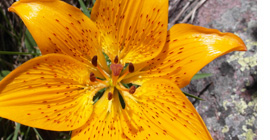The GR20: a unique mountain landscape
Flora and Corsica
Like other Mediterranean islands, Corsica has abundant vegetation used to dry heat, violent wind storms and the cold weather of the mountains. Its tangled and fragrant maquis (scrub) has a wealth of unique subspecies, only found on this particular island. Up to 600m in altitude, it is possible to spot wild strawberry trees, myrtle, rosemary, cistus and heather. Above this zone, laricio pine forests reign on sunny slopes (sulana). During the 19th century, Guy de Maupassant celebrated these majestic forests in his book on Corsica: “Enormous pine trees created a groaning canopy above our heads that gave out a sad and constant lament, whilst both to the left and to the right, their straight and slender trunks formed a sort of army of organ pipes that seemed to make monotonous music of wind amongst the pines.”
Corsica, a granite island
gr20.co.uk > flora & geology


